| Listing 1 - 8 of 8 |
Sort by
|
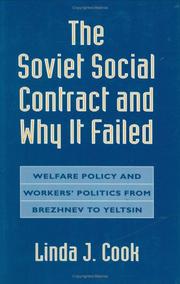
ISBN: 0674828003 Year: 1993 Volume: 86 Publisher: Cambridge, Mass. Harvard University Press
Abstract | Keywords | Export | Availability | Bookmark
 Loading...
Loading...Choose an application
- Reference Manager
- EndNote
- RefWorks (Direct export to RefWorks)
331.5 <47+57> --- 323.3 <47+57> --- Labor policy --- -Working class --- -Commons (Social order) --- Labor and laboring classes --- Laboring class --- Labouring class --- Working class --- Working classes --- Social classes --- Labor --- State and labor --- Economic policy --- Arbeidsmarkt. Werkgelegenheid --(algemeen)--?<47+57> --- Sociale groepen. Sociale lagen. Klassen. Standen --(in de politiek)--?<47+57> --- Employment --- Government policy --- Soviet Union --- -Social conditions --- -331.5 <47+57> --- -Arbeidsmarkt. Werkgelegenheid --(algemeen)--?<47+57> --- 323.3 <47+57> Sociale groepen. Sociale lagen. Klassen. Standen --(in de politiek)--?<47+57> --- 331.5 <47+57> Arbeidsmarkt. Werkgelegenheid --(algemeen)--?<47+57> --- -Labor policy --- Social conditions --- 1945-1991
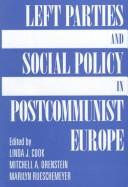
ISBN: 0813335698 Year: 1999 Publisher: Boulder Westview
Abstract | Keywords | Export | Availability | Bookmark
 Loading...
Loading...Choose an application
- Reference Manager
- EndNote
- RefWorks (Direct export to RefWorks)
Socialism --- -Socialism --- -Post-communism --- -Political parties --- -#SBIB:004.AANKOOP --- #SBIB:328H27 --- #SBIB:328H262 --- #SBIB:316.8H40 --- #SBIB:35H437 --- Parties, Political --- Party systems, Political --- Political party systems --- Political science --- Divided government --- Intra-party disagreements (Political parties) --- Political conventions --- Postcommunism --- World politics --- Communism --- Marxism --- Social democracy --- Socialist movements --- Collectivism --- Anarchism --- Critical theory --- Instellingen en beleid: Midden- en Centraal Europa: algemeen --- Instellingen en beleid: Rusland en het GOS --- Sociaal beleid: social policy, sociale zekerheid, verzorgingsstaat --- Beleidssectoren: sociale zekerheid --- Europe, Eastern --- Russia (Federation) --- -Europe, Eastern --- -East Europe --- Eastern Europe --- Social policy. --- Social policy --- Politics and government --- -Politics and government --- Political parties --- Post-communism --- -Social policy. --- #SBIB:004.AANKOOP
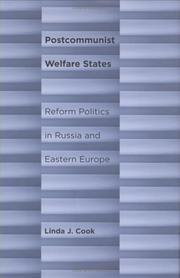
ISBN: 0801479002 0801460093 9780801460098 0801445264 9780801445262 9780801445262 0801445264 9780801479007 1322503079 Year: 2007 Publisher: Ithaca : Cornell University Press,
Abstract | Keywords | Export | Availability | Bookmark
 Loading...
Loading...Choose an application
- Reference Manager
- EndNote
- RefWorks (Direct export to RefWorks)
In the early 1990's, the countries of the former Soviet Bloc faced an urgent need to reform the systems by which they delivered broad, basic social welfare to their citizens. Inherited systems were inefficient and financially unsustainable. Linda J. Cook here explores the politics and policy of social welfare from 1990 to 2004 in the Russian Federation, Poland, Hungary, Belarus, and Kazakhstan. Most of these countries, she shows, tried to institute reforms based on a liberal paradigm of reduced entitlements and subsidies, means-testing, and privatization. But these proposals provoked opposition from pro-welfare interests, and the politics of negotiating change varied substantially from one political arena to another. In Russia, for example, liberalizing reform was blocked for a decade. Only as Vladimir Putin rose to power did the country change its inherited welfare system. Cook finds that the impact of economic pressures on welfare was strongly mediated by domestic political factors, including the level of democratization and balance of pro- and anti-reform political forces. Post communist welfare politics throughout Russia and Eastern Europe, she shows, are marked by the large role played by bureaucratic welfare stakeholders who were left over from the communist period and, in weak states, by the development of informal processes in social sectors.
Post-communism --- Welfare state --- Public welfare --- State, Welfare --- Economic policy --- Social policy --- State, The --- Welfare economics --- Benevolent institutions --- Poor relief --- Public assistance --- Public charities --- Public relief --- Public welfare reform --- Relief (Aid) --- Social welfare --- Welfare (Public assistance) --- Welfare reform --- Human services --- Social service --- Government policy --- Europe, Eastern --- Russia (Federation) --- Politics and government --- POLITICAL SCIENCE --- Politics and government. --- Post-communism. --- Postkommunism --- Public welfare. --- SOCIAL SCIENCE --- Sozialpolitik. --- Välfärdspolitik --- Welfare state. --- Public Policy --- Social Services & Welfare. --- World --- Russian & Former Soviet Union. --- Human Services. --- Since 1989. --- Eastern Europe. --- Kasachstan. --- Osteuropa. --- Russia (Federation).
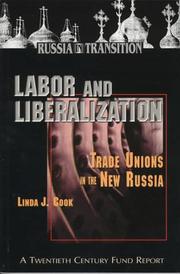
ISBN: 0870783777 Year: 1995 Publisher: Washington D.C. Brookings
Abstract | Keywords | Export | Availability | Bookmark
 Loading...
Loading...Choose an application
- Reference Manager
- EndNote
- RefWorks (Direct export to RefWorks)
Digital
ISBN: 9780801460098 9780801479007 Year: 2011 Publisher: Ithaca, N.Y. Cornell University Press
Abstract | Keywords | Export | Availability | Bookmark
 Loading...
Loading...Choose an application
- Reference Manager
- EndNote
- RefWorks (Direct export to RefWorks)
Book
ISBN: 9781108875820 1108875823 9781108880794 1108880797 9781108891202 1108891209 Year: 2024 Publisher: Cambridge, England : Cambridge University Press,
Abstract | Keywords | Export | Availability | Bookmark
 Loading...
Loading...Choose an application
- Reference Manager
- EndNote
- RefWorks (Direct export to RefWorks)
What is the relationship between the expansion of international labour migration, informal and precarious employment, and growing nationalism? Welfare Nationalism compares 21st century MENA migrations to Europe and Russia, the Ukrainian refugee migration to Europe in 2022, and labor migrations from Central Asia to Russia and from Central and Eastern Europe to Britain. Linda Cook contends that exclusionary and inclusionary migration cycles exist in both regions, driven by the 'deservingness' of migrants and mobilized by anti-immigrant politicians. Arguing that the long-term deterioration of labor markets and welfare provision for nationals in Europe and Russia drives welfare nationalism, she shows how populist parties in Europe and sub-national elites in Russia thrive on scapegoating migrants. Featuring a unique comparative analysis, this book examines the increasing harshness of contemporary migration policies and explores how we have arrived at the daily stand-offs of desperate international migrants against Europe's powers of surveillance and enforcement.
Nationalism --- Welfare state --- Europe --- Russia (Federation) --- Emigration and immigration --- Social aspects.
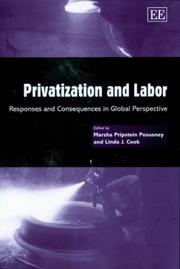
ISBN: 1840644354 Year: 2002 Publisher: Northampton, MA : Edward Elgar Pub.,
Abstract | Keywords | Export | Availability | Bookmark
 Loading...
Loading...Choose an application
- Reference Manager
- EndNote
- RefWorks (Direct export to RefWorks)
Labor market. --- Privatization. --- Marché du travail --- Privatisation --- Labor market --- Privatization --- #SBIB:023.IO --- #SBIB:316.334.2A470 --- #SBIB:35H201 --- #SBIB:35H435 --- 330.548 --- 332.10 --- EEU / Central & Eastern Europe --- LDC / Developping Countries - Pays En Développement --- NBB congres --- Denationalization --- Contracting out --- Corporatization --- Government ownership --- Employees --- Market, Labor --- Supply and demand for labor --- Markets --- Arbeidssociologie: het sociaal-economisch overheidsbeleid: algemeen --- Overheidsmanagement: technieken --- Beleidssectoren: economisch en werkgelegenheidsbeleid --- Nationalisatie. Privatiseringen --- Betrekkingen tussen werkgevers en werknemers. Organisatie van de arbeidsverhoudingen in de industrie: algemeenheden --- Supply and demand --- Betrekkingen tussen werkgevers en werknemers. Organisatie van de arbeidsverhoudingen in de industrie: algemeenheden.
Multi

ISBN: 9780801470349 Year: 2014 Publisher: Ithaca, N.Y. Cornell University Press
Abstract | Keywords | Export | Availability | Bookmark
 Loading...
Loading...Choose an application
- Reference Manager
- EndNote
- RefWorks (Direct export to RefWorks)
| Listing 1 - 8 of 8 |
Sort by
|

 Search
Search Feedback
Feedback About UniCat
About UniCat  Help
Help News
News